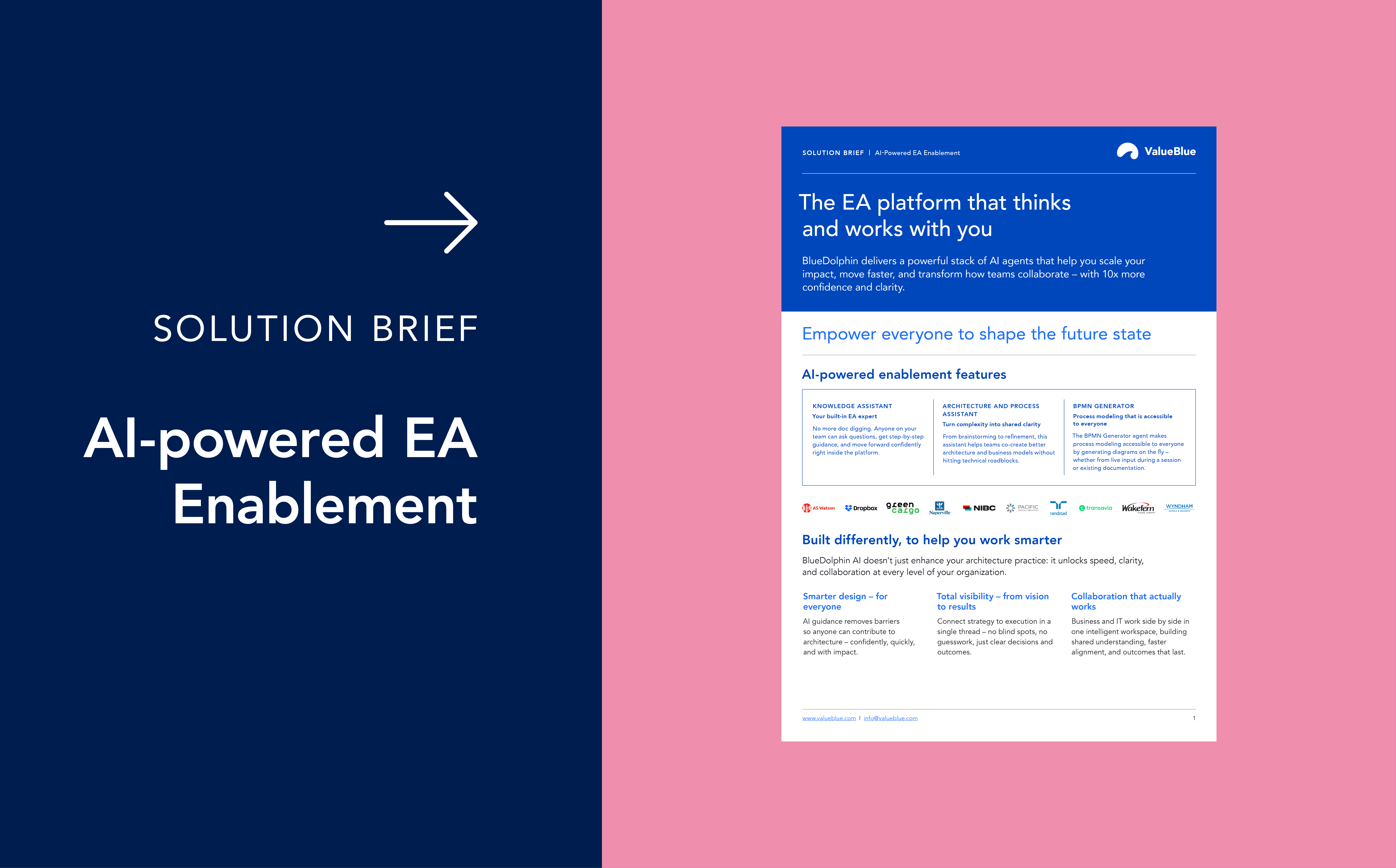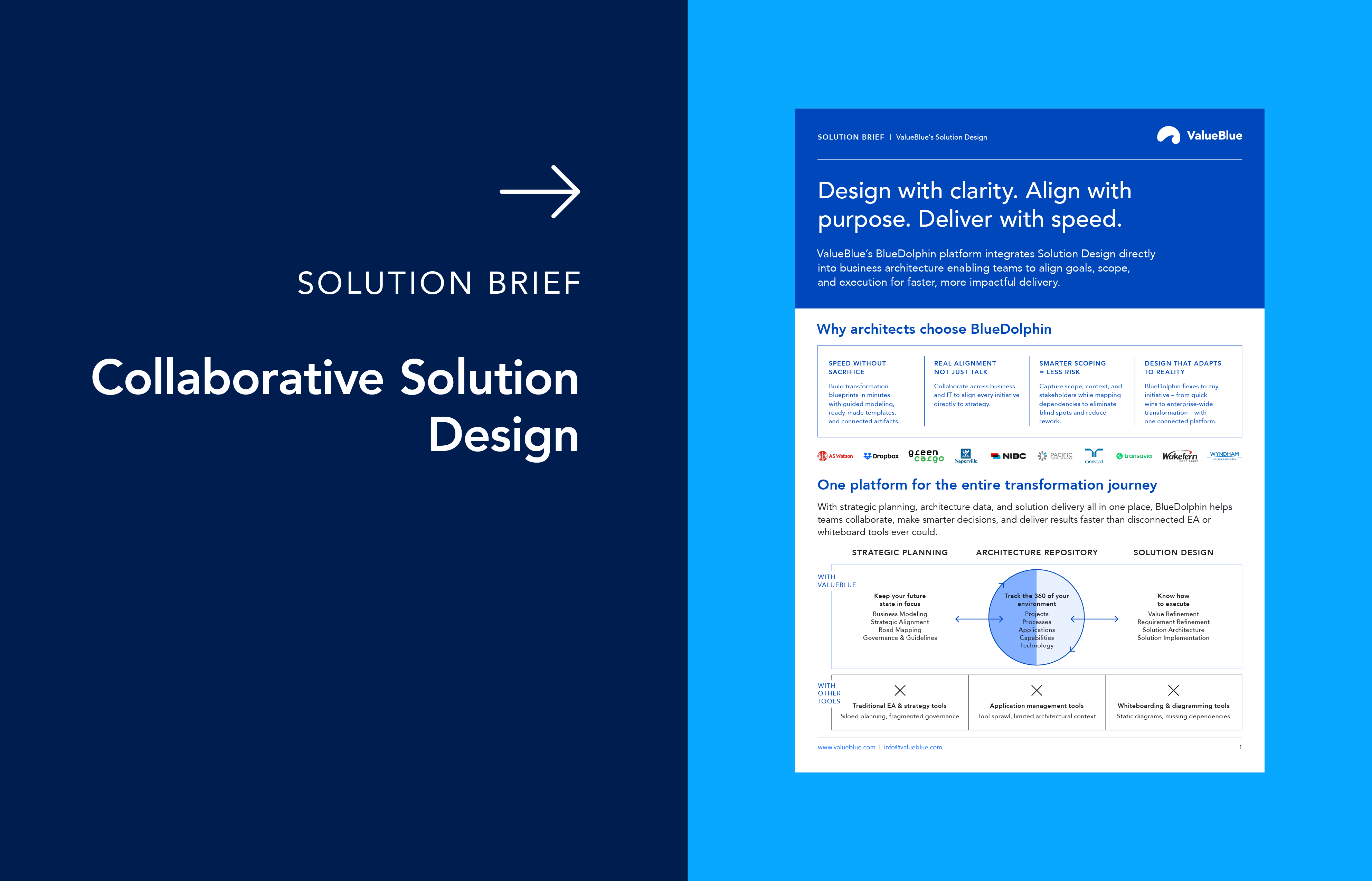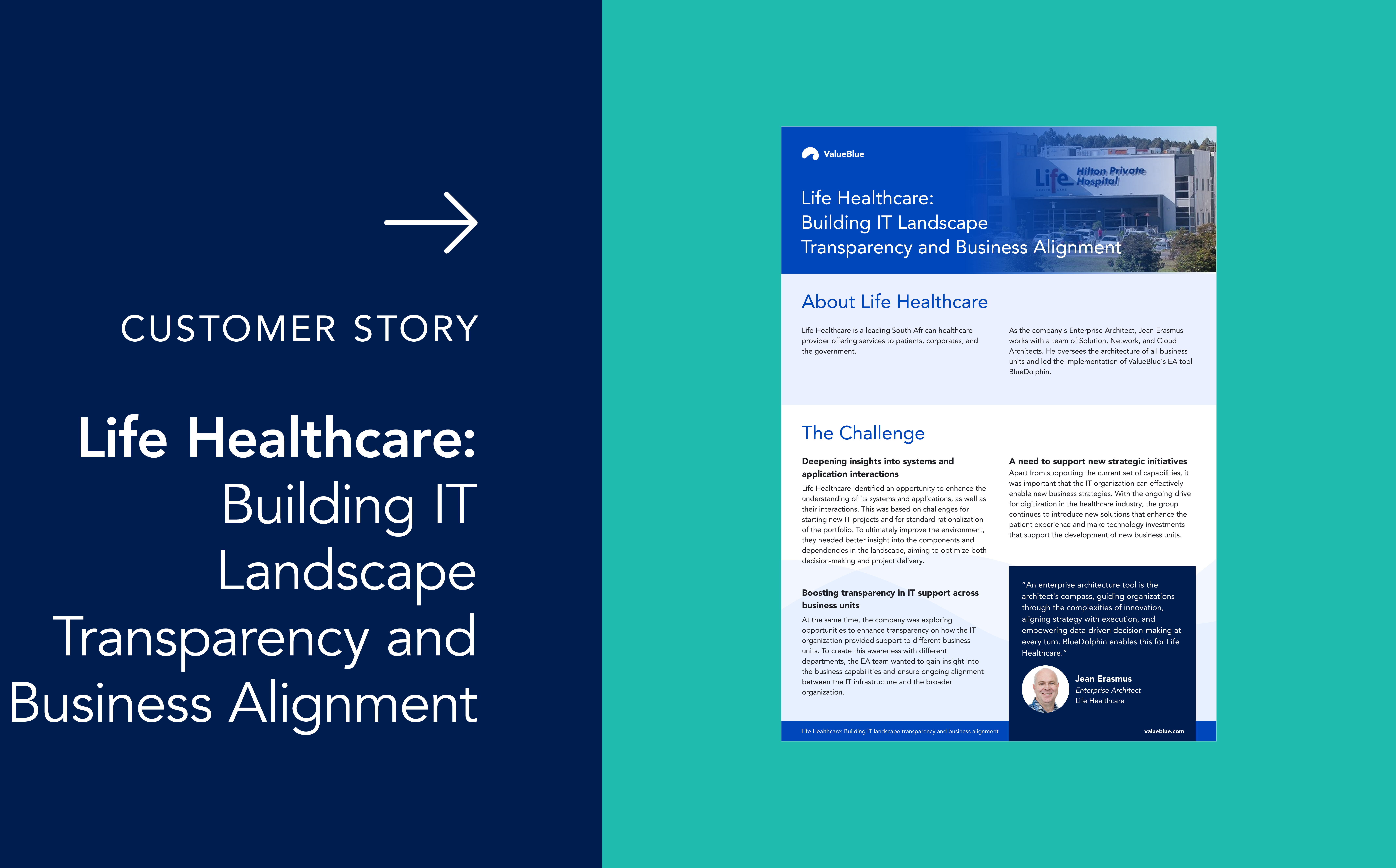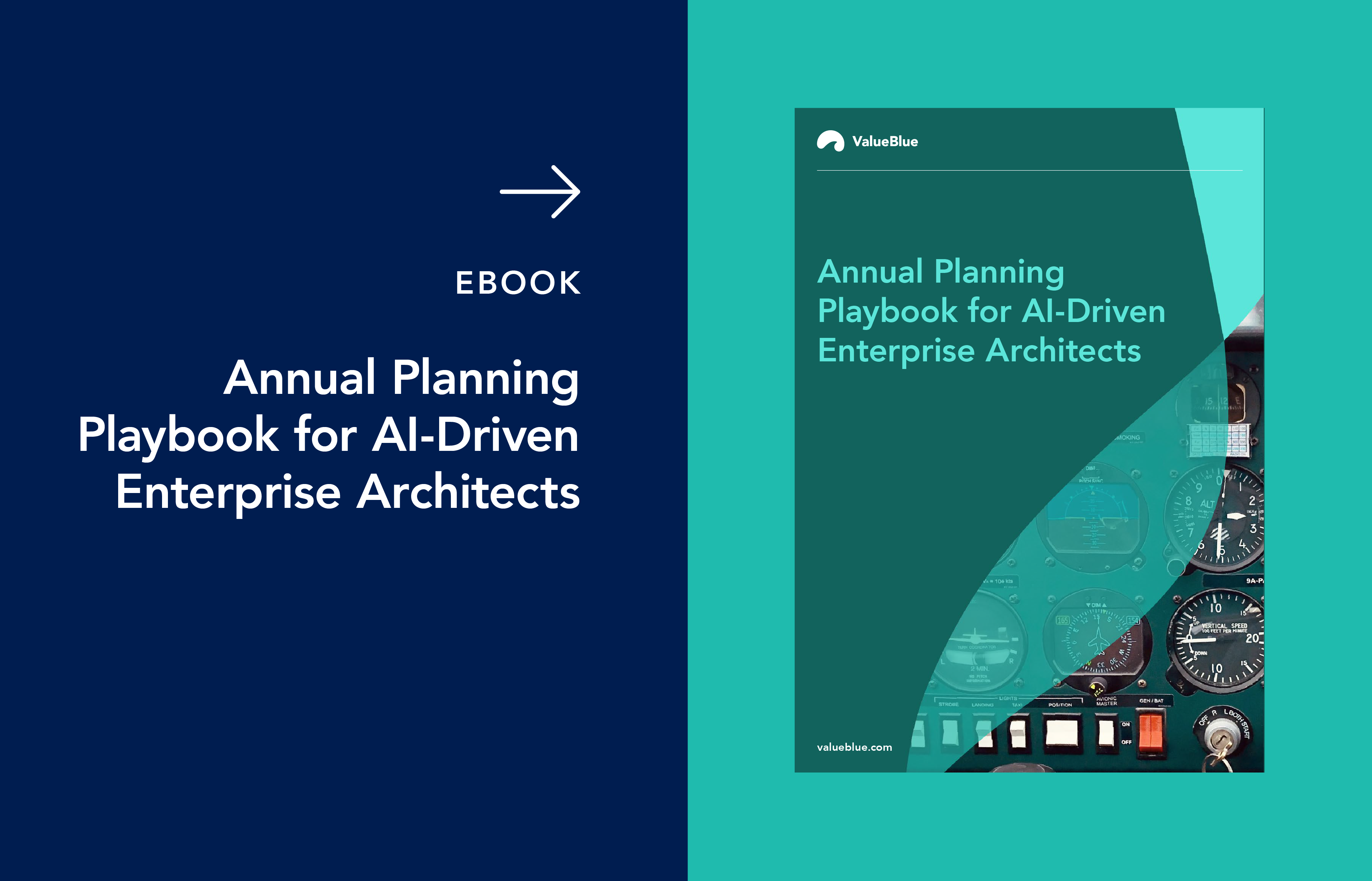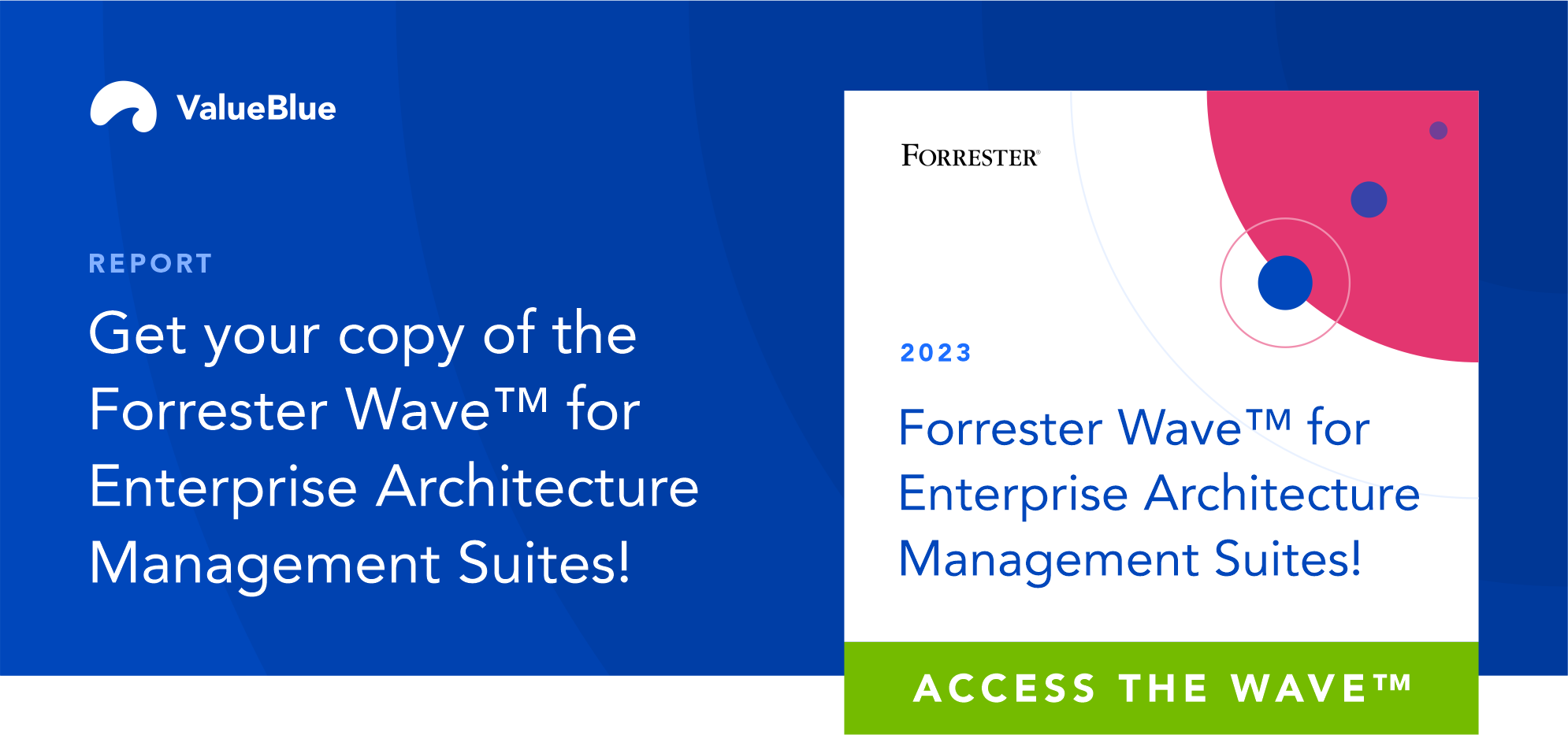ValueBlue in Forrester Wave™ for Enterprise Architecture, Q1 2023
Forrester have published their report, The Forrester Wave™: Enterprise Architecture Management Suites, Q1 2023. For this annual report, Forrester conducts research into the vendors in the Enterprise Architecture space. This year, Forrester lists the 12 most significant vendors, including ValueBlue. So how does Forrester come to their conclusions? What are its research criteria? This blog explains how The Forrester Wave™ comes to be, and contextualizes how Forrester evaluates ValueBlue.
What is The Forrester Wave™?
Like other analyst firms, Forrester conducts research into various markets, including the Enterprise Architecture space. They develop a comprehensive overview of the players and their offerings by interviewing vendors and end users. “The Forrester Wave™,” as Forrester writes, “is a guide for buyers considering their purchasing options in a technology marketplace and is based on our analysis and opinion.”
What audiences is Forrester generally targeting? To whom is the Wave most interesting? Typically, the organizations that might benefit the most from the report's insights have either a lower level of Enterprise Architecture maturity and are a little smaller in size, or they already have some sort of EA practice in place and are in need of a tool to support the expansion of EA throughout the larger business, for instance.
IT leaders and Enterprise Architects looking for an Enterprise Architecture tool can use the report as a shortlist of the most promising vendors instead of going through tons of website pages, product offering descriptions, reviews, and more. The Wave provides a comprehensive overview of the market developments, an elaborate description of each vendor with their strengths and weaknesses, and a scoring table. Together, they result in a graphical positioning of each vendor, called the Wave. The report helps decision-makers make well-informed purchases.
How do you interpret the Wave?
Before diving into the graphical representation of the data in the Wave visualization, we must look at the aforementioned scoring table. This scoring table, or Scorecard as Forrester calls it, has three categories: Current Offering, Strategy, and Market Presence. Vendors receive a score ranging from 1.00 to 5.00 for each category, which in turn is divided into sub-categories called Criteria.
- Current Offering is measured by how well the product is suited for Criteria such as customer-facing architecture, environmental sustainability, and organizational architecture.
- Strategy scores vendors on Criteria such as Vision, Roadmap, Innovation, Partner Ecosystem, and more.
- The Market Presence is based on the vendors’ revenue and the number of customers.
These three categories are combined into one visualization: the Wave. The Wave has two axes on which the vendors are placed based on their average scores in the first two Scorecard categories. The y-axis ranks the current offering of vendors, and the x-axis represents the strength of their strategy.
That leaves the third category: Market presence. The size of the vendor’s dot in the graph represents their market presence. The larger the dot, the greater the presence. It is important to note that this category does not influence the scoring for either the y or x-axis. That means a smaller organization can still score well on its current offering and strategy.
The Wave adds one more layer of information: the actual waves. These circles fan out from the top right corner, resulting in a grouping of several vendors per wave. Starting top-right, the vendors in the top category are named Leaders by Forrester. The next wave is for the Strong Performers. One wave further are the Contenders, followed by the rest, called the Challengers. By using this model, Forrester places organizations together based on their Current Offering and Strategy scores, helping to differentiate between different groups of vendors.
- Leaders. Leaders have both a strong product and strategy. Startups and established companies alike can rank as Leaders, distinguished by the market presence dimension.
- Strong Performers. Strong performers receive medium-high scores on both the product and strategy dimensions, and they are likely to appear on many users’ shortlists. On at least one dimension, however, they have room to grow before qualifying as a Leader.
- Contenders. Contenders have products and strategies that don't quite (yet) match the broader scope of Leaders and Strong Performers vendors. However, Contenders could also provide a specialized approach to a specific set of use cases.
- Challengers. Challengers either are not particularly strong in any of the dimensions or are strong in only one of the dimensions — e.g., a strong current offering but a weak strategy for the future, or a great strategy but without a product to match.
How does Forrester evaluate ValueBlue?
In The Forrester Wave™: Enterprise Architecture Management Suites, Q1 2023, Forrester places ValueBlue in the category of Contenders. They write that “ValueBlue has a pragmatic and effective offering that will meet the needs of most EA professionals and is competitive in all criteria.” Forrester continues by stating that “ValueBlue is an evolving product that is ideal for EA practices looking for a pragmatic EA tool that supports foundational use cases across the whole architecture footprint.”
Forrester's scoring and description of our product prove that the vendors in the Wave all have their respective strong suits. It is up to the IT decision-makers to evaluate the different offerings and approaches the vendors have toward Enterprise Architecture. That means a Leader might not automatically provide the best fit for an organization's needs. Rather, a Contender or Strong Performer could very well be more specialized in a particular set of use cases, or for a specific market segment.
The Strongest Roadmap Strategy
Moreover, ValueBlue’s positioning in the Wave shows that Forrester positions ValueBlue as a vendor with a stronger strategy. Within the Strategy category, ValueBlue received a maximum of 5.00 points in the Roadmap criterion. Only two other vendors receive that score, and both are positioned as Leaders. We see Forrester’s scoring as a testament to our vision of the evolution of Enterprise Architecture. It confirms that we are developing a solid, future-proof platform and that its positive impact on our customers’ organization is growing.
Are you curious about which vendors Forrester has included in their report, and to see exactly how these are positioned in The Forrester Wave™? We are happy to offer you complimentary access to the report. Click the button to go directly to the report.
